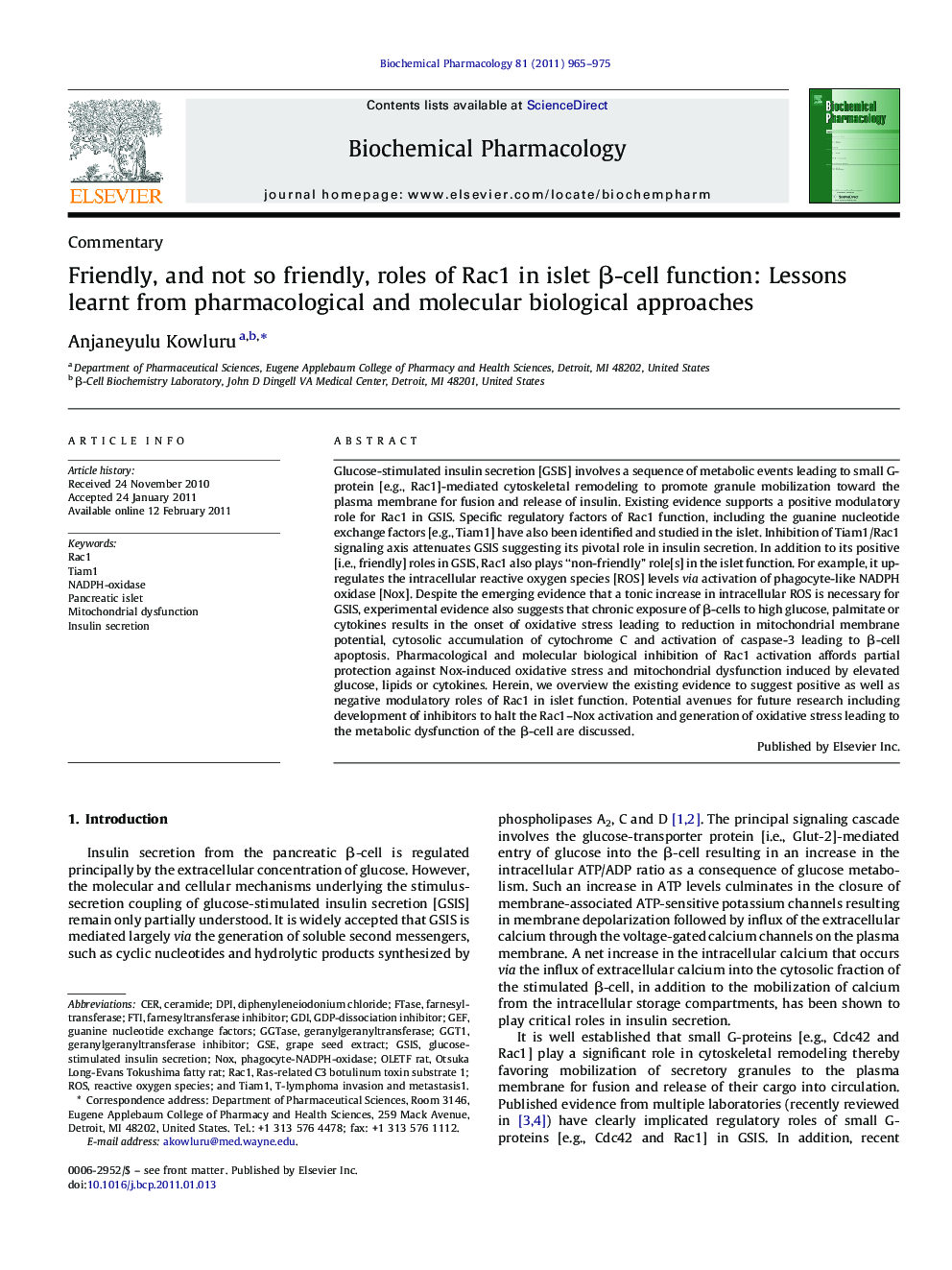| کد مقاله | کد نشریه | سال انتشار | مقاله انگلیسی | نسخه تمام متن |
|---|---|---|---|---|
| 2513436 | 1118414 | 2011 | 11 صفحه PDF | دانلود رایگان |

Glucose-stimulated insulin secretion [GSIS] involves a sequence of metabolic events leading to small G-protein [e.g., Rac1]-mediated cytoskeletal remodeling to promote granule mobilization toward the plasma membrane for fusion and release of insulin. Existing evidence supports a positive modulatory role for Rac1 in GSIS. Specific regulatory factors of Rac1 function, including the guanine nucleotide exchange factors [e.g., Tiam1] have also been identified and studied in the islet. Inhibition of Tiam1/Rac1 signaling axis attenuates GSIS suggesting its pivotal role in insulin secretion. In addition to its positive [i.e., friendly] roles in GSIS, Rac1 also plays “non-friendly” role[s] in the islet function. For example, it up-regulates the intracellular reactive oxygen species [ROS] levels via activation of phagocyte-like NADPH oxidase [Nox]. Despite the emerging evidence that a tonic increase in intracellular ROS is necessary for GSIS, experimental evidence also suggests that chronic exposure of β-cells to high glucose, palmitate or cytokines results in the onset of oxidative stress leading to reduction in mitochondrial membrane potential, cytosolic accumulation of cytochrome C and activation of caspase-3 leading to β-cell apoptosis. Pharmacological and molecular biological inhibition of Rac1 activation affords partial protection against Nox-induced oxidative stress and mitochondrial dysfunction induced by elevated glucose, lipids or cytokines. Herein, we overview the existing evidence to suggest positive as well as negative modulatory roles of Rac1 in islet function. Potential avenues for future research including development of inhibitors to halt the Rac1–Nox activation and generation of oxidative stress leading to the metabolic dysfunction of the β-cell are discussed.
A growing body of evidence from multiple laboratories implicated Rac1 in physiological insulin secretion. Emerging evidence is also suggestive of potential involvement of Rac1 in the metabolic dysfunction of the islet β-cell induced by high glucose, palmitate, ceramide or cytokines, specifically at the level of phagocyte-like NADPH oxidase-mediated generation of ROS and associated mitochondrial dysfunction. Potential avenues for future research including development of inhibitors to halt the Rac1–Nox activation and generation of oxidative stress leading to the metabolic dysfunction of the β-cell are also discussed herein.Figure optionsDownload as PowerPoint slide
Journal: Biochemical Pharmacology - Volume 81, Issue 8, 15 April 2011, Pages 965–975